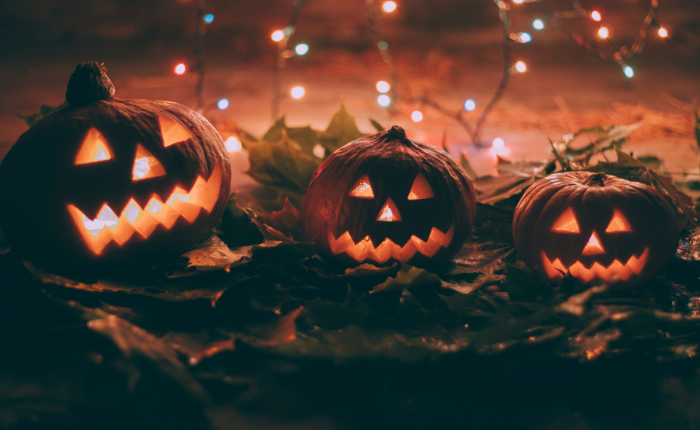|
How Halloween Took Root and Flourished in Spain
Friday, October 31, 2025 @ 9:20 PM
Spain, a nation celebrated for its deep-seated traditions like Día de Todos los Santos (All Saints' Day) on November 1st, has, in recent decades, enthusiastically embraced the global phenomenon of Halloween. What started as an "imported" holiday has blossomed into a vibrant, multi-layered celebration that skillfully blends modern fun with ancient Iberian and Celtic roots.

The relationship between Spain and the end-of-October observance is surprisingly complex, with both ancient roots and a relatively recent, rapid expansion:
-
Ancient Celtic Heritage (Samaín): The eerie roots of Spain's association with this time of year can be traced back thousands of years to the northwestern region of Galicia. Here, the ancient Celtic festival of Samhain ("end of summer") was celebrated. This traditional festival, known locally as Samaín or Noite dos Calacús (Night of the Pumpkins), marks the time when the veil between the living and the dead is thinnest.
-
Traditions: Even today, the modern revival of Samaín in Galicia involves carving pumpkins (or sometimes turnips), sharing ghost stories, lighting bonfires, and performing rituals like La Queimada (a flaming alcoholic punch with spells) to ward off evil spirits.
-
The Deep-Rooted Traditional Focus (Día de Todos los Santos): For centuries, the main focus in Spain has been the solemn and reflective Día de Todos los Santos on November 1st, followed by Día de los Fieles Difuntos (All Souls' Day) on November 2nd. These are national holidays dedicated to honouring the dead.
-
Customs: Families visit cemeteries to clean and elaborately decorate the graves of loved ones with fresh flowers, especially chrysanthemums, turning the cemeteries into vibrant places of remembrance and respect.
-
The American Cultural Tide: The rapid growth in the importance of Halloween (October 31st) began in the late 1980s and 1990s, largely driven by Anglo-Saxon cultural influence, particularly from the United States. Globalisation, horror movies, and television were key in introducing the now-familiar imagery of Jack-o'-lanterns, elaborate costumes, and "trick-or-treating" to Spanish society.
-
Growth: In large cities like Madrid and Barcelona, the celebration first gained a foothold in international schools, bars, and foreign communities. By the 2000s, the holiday was firmly established, especially among children and young people.
Modern Halloween in Spain is characterised by a fascinating mix, often celebrated over a three-day period that includes October 31st, November 1st, and November 2nd.

Modern Festivities on October 31st
The day, sometimes referred to as Día de las Brujas (Day of the Witches), is now a major occasion for contemporary celebration:
-
Costume Parties and Nightlife: Adults embrace the party spirit, with nightclubs, bars, and even themed events in amusement parks going all-out with elaborate decorations and costume parties.1 ostumes often lean toward the traditional spooky and macabre—ghosts, zombies, and vampires—though pop culture figures are increasingly common.
-
"Truco o Trato" (Trick-or-Treating): While not as universal or elaborate as in the US, "truco o trato" is now common in many urban neighbourhoods, schools, and community centres, especially for younger children.
-
Urban Spookiness: Cities like Barcelona and Málaga organise public parades, zombie marches, and haunted house experiences, creating a major spectacle.
The Culinary Bridge to All Saints' Day
The transition from the playful fright of Halloween to the reverence of All Saints' Day is often marked by traditional autumn foods, shared by families and friends:
-
La Castanyada (Catalonia): In Catalonia and parts of the north, the focus is on this traditional autumn festival, where people gather to eat castanyes (roasted chestnuts), boniatos (sweet potatoes), and panellets (small almond-based marzipan cakes).
-
Huesos de Santo: Across Spain, bakeries sell Huesos de Santo ("Saint's Bones"), small, marzipan-filled pastries, and Buñuelos de Viento (fried cream-filled fritters), tying the festivities to the religious holiday.

The Reverence of November 1st
Crucially, the fun of Halloween doesn't overshadow the respect for Día de Todos los Santos. Many Spaniards—particularly older generations—still prioritise this day of reflection, which offers a poignant contrast to the revelry of the previous night. It remains a significant family occasion centred on memorial, cemetery visits, and sharing special meals.
Halloween in Spain today is a perfect example of cultural syncretism. It successfully maintains ancient, local rituals in regions like Galicia, while simultaneously integrating the fun, commercialised appeal of the Anglo-Saxon holiday into its modern urban life, all while respecting the solemn, family-focused tradition of All Saints' Day. It has grown from a novelty to an established, highly anticipated event.
0 Comments
Leave a comment
You don't have to be registered to leave a comment but it's quicker and easier if you are (and you also can get notified by email when others comment on the post). Please Sign In or Register now.
|
Name *
|
|
|
|
Spam protection: |
|
|
|
Your comment * (HTML not allowed)
|
|
| (Items marked * are required) |
|
|
|